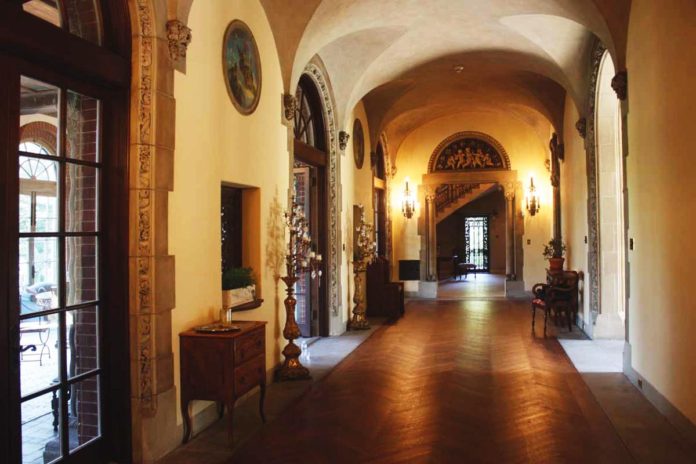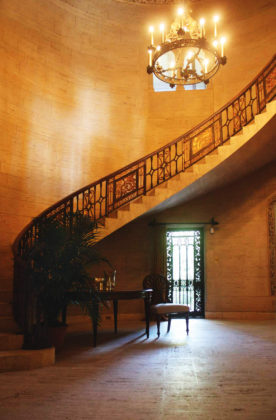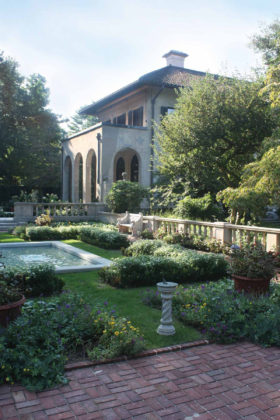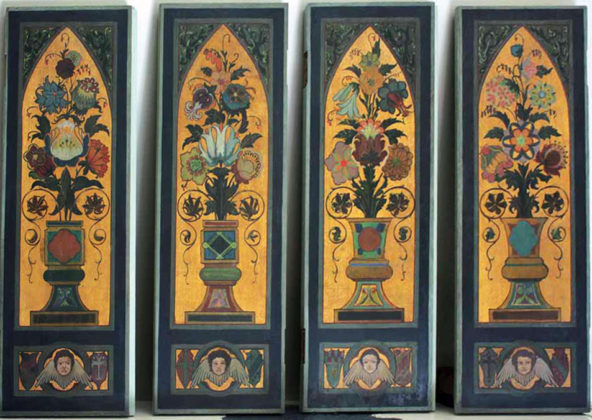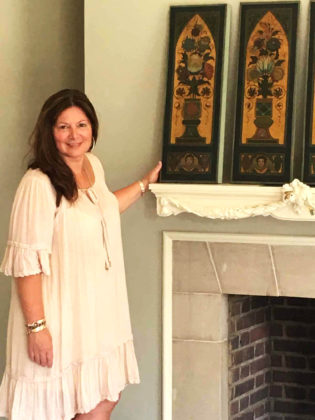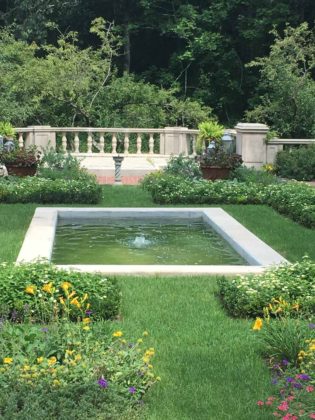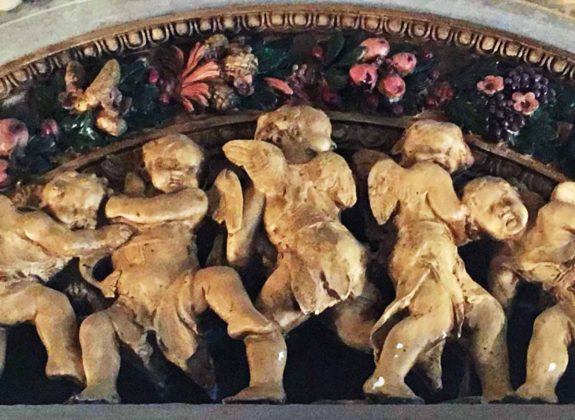A look inside a famed Gold Coast mansion
A labor of love indeed for the house in the woods, the meaning of La Selva, one of the many notable estates dotted along the famed Gold Coast of Long Island is receiving the rejuvenation that it so deserves, by philanthropist and co-owner of Brooks Brothers Group, Inc., Debra Del Vecchio.
La Selva, a 40-room Italian Renaissance pebble-dash stucco villa sits on 25 acres in Upper Brookville. The architectural team of Richard Howland Hunt and his brother Joseph Howland Hunt, known as Hunt & Hunt, sons of famed architect Richard Morris Hunt, designed it. The home was built in 1915, possibly through collaboration with the equally known architect Thomas Hastings of Carère & Hastings.
In a pleasant déjà vu, the elder Hunt would frequently collaborate on projects with the father of American landscape, Frederick Law Olmsted, designer of Central Park and countless other landscapes. A generation later, the Hunt brothers teamed up with Olmsted’s sons John Charles Olmsted and Frederick Law Olmsted Jr. to design La Selva for banking and railroad executive Henry Sanderson, Esq.

Following Sanderson, La Selva passed through three owners before Del Vecchio purchased the home in 2013.
Del Vecchio, who studied at Metropolitan Institute of Design in Syosset, has been feeding her passion for interior design and restoration for more than 18 years. Her first renovation and design project began with the Bleak House on Main Street in Suffield, CT, a home originally built in 1795.
She has acquired more than 1,700 documents of landscape notes, plans, diagrams, schedules and receipts and is trying to restore as much of the house as possible, although the project is taking a lot longer than she had anticipated. Some of the major renovation has included fixing the walls and plaster and although the floors are original, they have been stripped and refinished.
“The bones of the gardens are still here so it’s kind of easy to know what they did when I’m referring back,” says Del Vecchio. “Before I do anything to the landscape, I return to the original notes to see if what I’m doing is keeping with what they did.”
The mansion has a vaulted entryway with carved stone walls, Palladian arches, embellished fireplaces, patterned marble floors, intricately carved wooden doors and a domed rotunda with a spiral travertine staircase. The staircase is highly recognizable, recreated exactly for the set of director Baz Luhrmann’s The Great Gatsby (2013). The home has been used as the backdrop and set of many period films, historic photo shoots and more.
“The paintings in the dining room are probably the best feature of this house,” says Del Vecchio.
Over the course of several owners, some of the murals had been painted over and in some cases, had layers upon layers of paint. The art restoration team spent months, armed with dental picks, painstakingly removing each layer of paint to unveil the original murals.
“When the house was originally built, the family went to Florence, Italy, and found these two 35-foot paintings from the 1500s, brought them back and cut them into pieces to fit around the perimeter of the dining room,” says Del Vecchio. “They embedded the two larger 17-foot pieces into the wall.”
Each summer, Del Vecchio brings four artists from Rome to execute the restoration of the murals on the walls and the embedded canvas paintings, which had more than 500 years of grime.
“A restoration has to evolve; it can never be completely what it was,” says Del Vecchio. “And then you put your own spin on it.”


